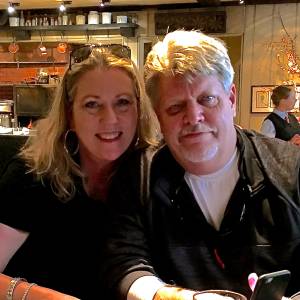Two Burners?
"Do what you can, with what you have, where you are."
--Theodore Roosevelt, 26th U.S. president
Here we are, a hundred years later and 9,000 miles around the globe, and yet these words, spoken by Teddy Roosevelt sometime around the turn of the last century, apply perfectly to what Chris and I have learned over the past nine years here in China and what we continue to practice today. To say that we no longer take the everyday conveniences of life in America for granted would be the understatement of this century, and this shot, taken in our tiny kitchen in Zhongshan is a perfect example of doing what we can with what we have where we are.
Although there are kitchens of every shape and size across America, there are standard features and appliances that will be found in almost every one of them: a refrigerator, a sink, a stove with four burners and an oven underneath (and now, at least in American kitchens, a microwave might be considered a standard feature. That being said, if you had asked us in 2003 to choose between a microwave and an oven, we would have chosen the oven without a moment's hesitation - now, we're not so sure!)
When we arrived in China with two small children in 2004 and had to set up an "American kitchen," you can imagine our surprise when the only thing we found in our suite was a small refrigerator, a rice cooker, a tiny microwave and a single induction burner for cooking. Fortunately for our youngest, who at the time was surviving solely on peanut butter and jelly sandwiches and Welch's fruit snacks (both of which we brought over with us in great quantity), there was no urgent need for anything other than the occasional juice box, which we found in great supply at the local grocery store. And thankfully, our oldest, much to our relief, fell immediately in love with every aspect of Chinese cuisine, so much so that we had to monitor the items she took off the buffet table or what she was offered by friends at the local restaurants.
But for Chris and myself, surviving on PB&J, fruit snacks and white rice was not an option, so, for the longest time, we all ate out at the hotel restaurants or local eateries with Chris' team; at one point we even had a chef who accommodated us by fixing a "Western menu" we had designed with all our favorite dishes (Maggie's pasta, Lee's sweet and sour pork, Lenny's hotdog, Larry's ham and cheese, to name a few.) But, despite our love for the camaraderie of friends, there came a time when we had to start cooking at home, and that's when the design of our Chinese kitchens became a challenge. We managed to get a larger refrigerator, a modern microwave and a water-boiler for coffee. For cooking, the building rewired the kitchen to support a double induction burner, so we could manage two pans at a time. But an oven? Not a chance.
It helps to remember that mostly all Chinese meals are cooked in one large pot, known to most Westerners as a Wok. I'm certainly no expert, but from observing my friends in their kitchens, it appears that about a cup of vegetable oil is used, over and over, to cook the entire meal, which consists of several different dishes ranging from fish, beef and chicken to every conceivable type of vegetable combination. Each dish is cooked in the same pot, one after the other; certain meals also include rice (cooked in a rice cooker) or noodles (cooked last in the Wok), but the focus is primarily on protein and vegetables, with fruit for dessert. All the plates are set out at once and shared by the entire family. (In restaurants, the plates are set on a revolving disc, a large "Lazy Susan," which is placed in the center of the table and turned by diners as they fill their plates, but Chinese restaurants are a blip for another day.)
So, from the standpoint of a Chinese kitchen and how daily meals are prepared, an oven is superfluous. Since food is never roasted or baked, and the Chinese don't crave bread and baked goods the way we do in the West, spending money for an appliance they would have little need or use of is not even a consideration. On top of that, like an electric dryer, an oven consumes massive electricity, and this is always a consideration in a Chinese home.
Although we don't use oil the same way the Chinese cooks do, and we try to use very lean meats and serve more Western style vegetables and side dishes, we've actually become quite adept at cooking a full meal on only two burners. Most of our friends can't imagine how we do it, but from our standpoint, the fact that we have more than one pot to cook in and two burners to cook on is a great luxury. After all, as any good Chinese cook will tell you, if you're able to cook the entire meal in one pot, where's the need for two burners?
- 2
- 0
- Panasonic DMC-GF3
- 1/4
- f/3.5
- 14mm
- 160

Comments
Sign in or get an account to comment.


